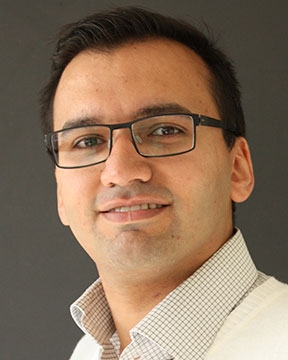



















 |
Mohammad VahabUNSWRobust Simulation Of Dynamic Hydraulic Fracturing In Naturally Fractured Formations Schrefler International Symposium on Geomechanics and Applications for Sustainable Development Back to Plenary Lectures » |
Abstract:In this study, an energy based hydro-mechanical model and computational algorithm for the problem of hydraulically driven fracture networks developing in naturally fractured impermeable media is developed. The model is based on non-differentiable energy minimization for the dynamic deformation and fracture of the body coupled with mass balance of fluid flow within the hydro-fractures. Time-discontinuity induces spurious crack-opening velocity fields which lead to nonphysical solutions for the coupled fluid pressure field defined locally along the crack faces. The use of a time-continuous fracture model, such as the present non-differentiable energy minimization approach, is crucial for the numerical soundness and stability of the hydraulic fracture propagation algorithm. A discontinuous Galerkin finite element formulation is implemented, in which every element edge in the mesh is a potential site of hydro-fracture initiation and propagation. The presence of pre-existing natural fractures, as a common challenge in nearly all geological formations, are modelled with desirable edibility by simply assigning different fracture properties to the element edges defining the natural fractures. Using the graph theory principals, a search algorithm is proposed to identify, among all, the sub-set of cracked interfaces that form the interconnected hydraulically loaded fracture network. Robustness of the proposed computational algorithm and its versatility in the study of hydraulic fracturing is shown through several numerical simulations. References:[1] M.R. Hirmand, K. D. Papoulia, Int. J. Numer. Meth. Eng. 115 (2018) 627-650. |
|